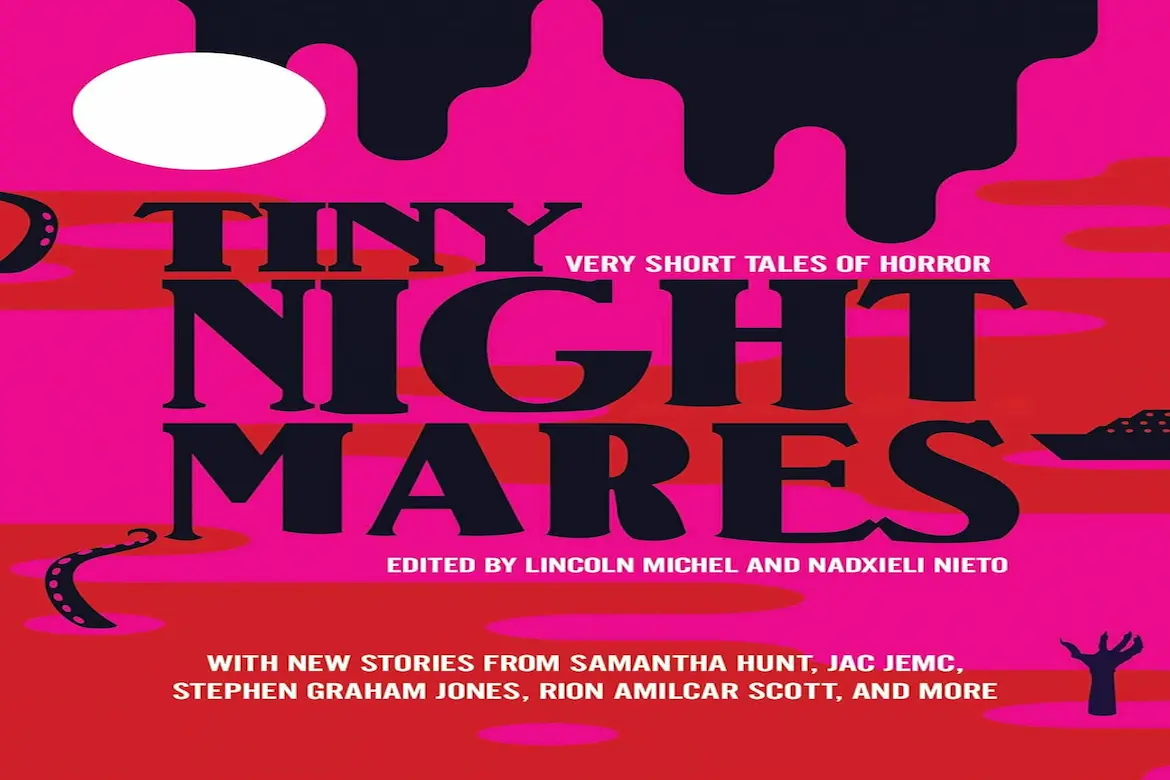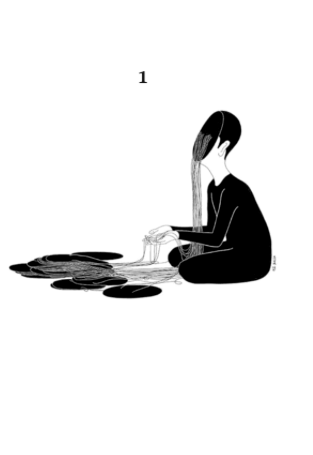Happy Halloween as this review revisits Tiny Nightmares
In This LitStack Review of Tiny Nightmares
Do Tiny Nightmares Scare You?
In their introduction to Tiny Nightmares: Very Short Tales of Horror, editors Lincoln Michel and Nadxieli Nieto write they “wanted to poke another hole in the artificial barrier between ‘literary’ and ‘genre’ fiction,” and this anthology—perfect for the coming celebration of darkness, pumpkins, and goblin-centered mischief—features forty-two stories of what might be called flash horror. With contributions by established authors of both horror and literary fiction, each story answers the question, What scares you?
Scariness is relative, but there are scary things one can count on: doppelgängers, the uncanny valley, and necromancy, for example. And some of us tolerate scary things more than others. Here, given the hybrid of horror (which depends on shock, fear, and sometimes repulsion), the literary (which operates on character and language, among other devices), and the abbreviated form of flash (with its concision and intensity), the scary story takes on a fresh shape. The stories launch swiftly and the compressed action manages to heighten the suspense of what might be coming.
Heads, Hearts, Limbs, and Viscera
The editors of Tiny Nightmares, who previously collaborated on the 2018 story collection Tiny Crimes, have assembled a terrific roster of contributors, writers of fiction and nonfiction, whose work ranges from the speculative to translations, to YA.
The stories are divided into four scary classifications: Heads, Hearts, Limbs, and Viscera, and each is introduced with wonderful black and white illustrations by Daehyun Kim. The stories vary too in their influence—there are nods to the fairy tale, the voice-driven confessional, the gothic vampire romance, and literary fiction—which by way of contrast turns out to be an ideal setting to introduce an element of strange.
Classified under Limbs, take, for instance, this moment from “Pincer and Tongue,” by Stephen Graham Jones: “Rudolpho peeled his lips back from his mouthful of fangs, extracting himself hand over hand from the off-center spike while she raked him to ribbons…” And there’s a fabulist bent to Canisia Lubrin’s “Cedar Grove Rose,” (“She ran often, faster than she really could, churning the earth-lain dirt into wings, or some dragonfly nebula”) and in its setting, which occupies a place between Here and There, an outpost on the Atlantic coast of England after World War Two.
Filed under Viscera, the uncanny populates Helen McClory’s ghost tale, “Gabriel Metsu, Man Writing a Letter, c. 1664-66.” In this first-person account set in the Smithsonian Gallery of Art, a hard-boiled docent (“I’ve faced down Rothkos that pulled my soul half out like a string of flags from my throat”) arrives one morning, hears a noise, and, well, there’s something amiss in the gallery of Vermeers: “I stood in front of Man Writing a Letter, a peaceful painting, in high actual daylight and watched his fingers start to move his white quill over the page.”
“Visiting Hours,” by Lilliam Rivera takes place in one of the scariest settings I can think of: a hospital. Vilma is the pregnant and continually hungry girlfriend of Rogelio, who’s checking in for surgery on his clogged arteries. Vilma is hardly the picture of maternal bliss; she resents Rogelio, who hasn’t kept his promise to always take care of her, and given his bad arteries and her condition, the future she faces is scary indeed (“Who made the decision to live this life? she thinks”). Their future together takes a turn when, in the hospital waiting room, Vilma encounters an old woman with long black toenails whose breath smells of eggs.
As a newcomer to the horror genre, I feared encountering images that might keep me up at night, and there are those here, but stories like Rivera’s rely not only on terror and an encounter with the unknown but a satiric bent that makes for an unexpected dimension. There are other unexpected devices represented in these stories as well—metafictional intervals, unlikely tone, and the elevated language of naturalist, literary fiction—as in Troy L. Wiggin’s “Instrument of the Ancestors.”
The story opens in the rich style of a coming-of-age tale, until the moment we come to “Darius could still hear crystal clear through the decades the wet slap of Fred’s head against a cosmically positioned rock.”
Ben Loory’s “Pictures of Heaven” takes the miniaturist lens of a fable and an offhand tone, and these counter what turns out to be the ultimate in high stakes. An unnamed man, with canvas and paints, aims to capture an image of heaven, and things go terribly wrong:
There are angels with wings, and big white fluffy clouds, and lots of glowing halos, and a harp. And there’s a man on a throne—an old man with a beard—who one assumes, must be God.
And the man kind of likes it!
But then he tilts his head.
There’s something that isn’t right.
The man keeps at his painting but each attempt fails, and the story gradually reveals why. Scary!
Dark Forces Invade the Familiar
Kevin Brockmeier is a writer whose stories have genuinely scared me, most notably his classic, award-winning short story, “The Ceiling.” It’s a dystopian domestic tale about a failing marriage set against the slow but certain descent of a flat, black object in the sky—it first appears as a tiny square in the sky, no bigger than “a child’s tooth,” and eventually meets earth where it will crush the protagonist, his town, and his family. The story ranks as one of the most unsettling I’ve read, one that’s stayed with me over the years and at random moments has me returning to possible escape routes and the inevitable, terrifying end beneath its obsidian surface.
That, to me is the ultimate effect of a horror narrative—reorganizing your view of what is and what could be.
In Tiny Nightmares, Brockmeier’s “Parakeets” features another domestic unsettling. A man with three parakeets notices an unexplainable chill in his wood-paneled sunroom, and drawn to the mystery, flirts with its icy drift, standing in its flow and even setting the parakeets’ cage in its path. It’s an experiment you know won’t end well, and as Brockmeier does so well, allows dark forces to invade the familiar. And like so many of the stories in Tiny Nightmares, what seems ordinary is the most likely invitation for the terrifying.
—Lauren Alwan
About the Authors
LINCOLN MICHEL is the author of Upright Beasts, a collection of genre-bending stories from Coffee House Press. His work appears in The Paris Review, The New York Times, Strange Horizons, Granta, The Guardian, the Pushcart Prize anthology, and elsewhere. With Nadxieli Nieto, he is the editor of Tiny Crimes, an anthology of flash crime fiction. He teaches fiction writing at Columbia University and Sarah Lawrence College.
NADXIELI NIETO is the editor of Tiny Crimes and Gigantic Worlds with Lincoln Michel, and Carteles Contra Una Guerra. She was formerly an editor at NOON annual and Salt Hill Journal. Her work has appeared in Buzzfeed, Vice, The New York Tyrant, and elsewhere. Her collaborative artist books may be found in the collections of the Museum of Modern Art and the Brooklyn Museum.
Other Books by Lincoln Michel
Other LitStack Resources
Be sure and check out other LitStack Reviews, as well as articles and reviews by Lauren Alwan. LitStack’s here for what you should read.


